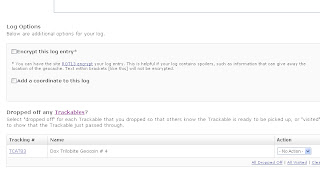The method I mentioned in my previous post requires you to plan your caching adventure in advance. If you want to have the detailed information about the caches you are hunting, you will need to write it down or print it.
What if you are out on errands and you decide you want to see if any caches are nearby? Then paperless caching is the thing for you! One big difference between the "Send to my GPS" and paperless caching using pocket queries is that with the latter, information about the cache, i.e. cache description, hint, previous logs, is saved to the GPS. When you use the "Send to my GPS" option, only the coordinate information goes to the GPS.
In order to create pocket queries, you must become a premium member. A word about the premium membership that is available on geocaching.com: The basic membership, although necessary to use geocaching.com, is free. The premium membership is not. I wouldn't just jump right into the premium membership. I suggest trying geocaching out for a while first. I have a few friends that found a cache or two then stopped hunting. No need for a paid membership there. I was geocaching for about a month and a half when I got my premium membership. I knew by then that I would use it. The premium membership will cost you $30 per year.
What you receive includes the ability to create pocket queries, find caches along a route (great for road trips,) sign up for cache alerts, save .GPX files to your iPhone (and some other smart phones), manage bookmark lists and find special caches available only to premium members. I mainly use the pocket queries,routes and new cache notification features.
Pocket queries are special lists of caches in a certain area. You can customize the search to show only caches of a certain type, size or location. Geocaching.com will email a file that can be transferred to your GPS or phone. You can also have the query automatically created and emailed to you. I do this with the caches around my home coordinates.
I probably won't go into how to get he .GPX files to your GPS unless there is a call for it. There are a few different methods available and the best one will probably depend on your GPS. Since I have two GPS receivers, I use two methods to transfer the .GPX data to them.
Waypoints: Some people are confused by the term waypoints. A waypoint is simply a location on the earth. We identify waypoint using GPS coordinates such as N°16.680, W 081° 23.234 A geocache is a waypoint, a parking area is a waypoint, your home is a waypoint. Some GPS receivers let you mark a waypoint while you are "out". This is helpful when you are hiking and want to make sure you can find your car.
Now get out there and find some caches!















